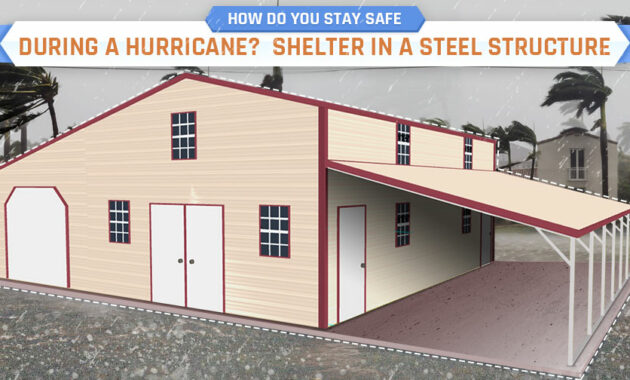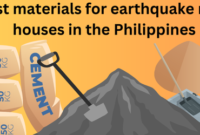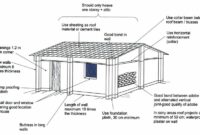Buy Property in the U.S – The United States is frequently hit by hurricanes, especially in the coastal regions. These natural disasters bring devastating winds, flooding, and storm surges that can cause significant damage to properties and endanger lives.
When considering purchasing a home in the U.S., it’s essential to factor in hurricane risks to ensure your investment remains safe and your family is protected.
In this guide, we’ll explore some of the safest areas to buy property during hurricane season and explain how hurricanes can impact housing.
The Dangers Hurricanes Pose to Housing
Hurricanes are powerful storms that form over warm ocean waters and cause destruction across large areas. The key elements that make hurricanes particularly hazardous to homes include:
1. High Winds
Hurricanes produce sustained winds exceeding 74 mph, with stronger hurricanes reaching winds of over 157 mph. These winds can tear off roofs, break windows, and uproot trees, causing severe damage to structures. Homes in vulnerable areas may require costly repairs or face total destruction.
2. Storm Surge
One of the most dangerous aspects of hurricanes is the storm surge—a rapid rise in sea level caused by the storm’s winds pushing water inland. Storm surges can flood entire neighborhoods, causing extensive water damage, rendering homes uninhabitable, and leading to mold infestations.
3. Flooding
Hurricanes often bring torrential rainfall, which leads to inland flooding, even far from coastal areas. Floodwaters can damage a home’s foundation, ruin interiors, and cause electrical hazards, making it expensive and difficult to restore.
4. Debris Impact
Flying debris—anything from tree branches to roofing materials—becomes projectiles during a hurricane, smashing through windows, damaging walls, and endangering people inside homes.
Given the severe impact hurricanes can have on housing, choosing to buy property in areas with low hurricane risks is crucial for long-term peace of mind.
Read also: Building a Hurricane-Resistant Home: Key Features and Considerations
Top 5 Safe Areas to Buy Property in the U.S. During Hurricane Season
While no area is entirely free from the possibility of severe weather, some regions of the United States are far less likely to experience hurricanes. These regions offer peace of mind for homeowners looking to avoid the risks associated with hurricane damage.
1. Pacific Northwest (Washington and Oregon)
The Pacific Northwest, including states like Washington and Oregon, offers some of the safest places to live when it comes to hurricane risks. This area is shielded from hurricanes due to its location on the western side of the U.S., far from the Atlantic and Gulf of Mexico where most hurricanes form.
- Why It’s Safe: Cold Pacific waters prevent the formation of hurricanes, making this area virtually hurricane-free.
- Bonus: The Pacific Northwest is known for its stunning natural beauty, outdoor recreational opportunities, and thriving technology sector.
2. Midwestern United States (Ohio, Illinois, Indiana)
The Midwest is another region that rarely experiences hurricanes. Located far from any coast, states like Ohio, Illinois, and Indiana enjoy relatively mild weather patterns and are largely unaffected by the hurricanes that batter coastal areas.
- Why It’s Safe: Its inland location minimizes any direct impact from hurricanes or tropical storms, although occasional remnants of storms can bring heavy rains.
- Bonus: The cost of living is lower than in coastal regions, and cities like Chicago and Columbus offer robust job markets and diverse cultural attractions.
3. Colorado
Colorado is often regarded as one of the safest states for those seeking to avoid hurricanes. Nestled in the heart of the Rocky Mountains, Colorado is far removed from the coasts and therefore well protected from hurricane activity.
- Why It’s Safe: The state’s high altitude and distance from the Gulf and Atlantic Oceans make it highly unlikely for hurricanes to reach Colorado.
- Bonus: Colorado is famous for its outdoor lifestyle, with skiing, hiking, and national parks attracting residents who love nature and adventure.
4. Arizona
Buy Property in the U.S – Arizona, known for its hot desert climate, is another safe bet for avoiding hurricanes. The dry conditions and inland location of the state mean hurricanes or tropical storms are exceedingly rare here.
- Why It’s Safe: The state is geographically distant from hurricane-prone areas and enjoys consistent dry weather, offering safety from hurricanes and their destructive effects.
- Bonus: Arizona offers affordable real estate, especially in cities like Phoenix and Tucson, and has become a popular destination for retirees seeking a warm climate and outdoor activities.
5. Upstate New York
While New York City and coastal parts of the state can occasionally experience remnants of hurricanes, upstate New York—north of Albany and along the Adirondack Mountains—is much safer. This region is far enough inland to avoid the brunt of storms.
- Why It’s Safe: Its inland location and distance from the coast make the chances of being hit by a full-strength hurricane extremely low.
- Bonus: Upstate New York offers picturesque landscapes, charming small towns, and proximity to major metropolitan areas without the risks associated with coastal living.
Additional Tips for Buying a Home in a Hurricane-Safe Area
- Check the Building Codes: Areas that are prone to hurricanes typically have stricter building codes, requiring homes to be built to withstand strong winds and flooding. Even if you buy in a low-risk area, ensuring your home is built to high standards will provide added peace of mind.
- Flood Insurance: Even if you buy in a relatively safe area, investing in flood insurance can be a wise decision. Hurricanes can cause widespread flooding even in unexpected locations, and a standard homeowner’s policy may not cover this type of damage.
- Elevation and Drainage: When purchasing a property, consider its elevation and surrounding drainage systems. Homes that are elevated or situated on hills are less likely to suffer flood damage, and good drainage systems can help mitigate flooding risks.
- Climate Change Considerations: With climate change altering weather patterns, areas that were once considered safe from hurricanes may become more vulnerable. Always keep updated on new data about shifting weather patterns and hurricane risks.
Conclusion
Buying a home in the U.S. during hurricane season doesn’t have to be a gamble. By focusing on regions that are less likely to be impacted by these destructive storms—such as the Pacific Northwest, Midwest, and inland states like Colorado and Arizona—you can secure a property with minimal hurricane risks. Additionally, understanding the dangers hurricanes pose to homes—such as high winds, storm surges, and flooding—can help you make informed decisions about where to buy and how to protect your investment for the future.
By choosing a safe area and taking preventive steps, you can enjoy peace of mind, knowing your home and family are well-protected from the ravages of hurricane season.
This article provides valuable insights and strategic information for potential homebuyers, offering not just practical advice but also highlighting the allure and advantages of choosing a safer area.
It aims to rank high in search engine results by focusing on relevant keywords and delivering expert guidance to those looking to invest wisely.
Best Safe Areas to Buy Property in the U.S. During Hurricane Season: A Comprehensive Guide: Alabama, Alaska, Arizona, Arkansas, California, Colorado, Connecticut, Delaware, Florida, Georgia, Hawaii, Idaho, Illinois, Indiana, Iowa, Kansas, Kentucky, Louisiana, Maine, Maryland, Massachusetts, Michigan, Minnesota, Mississippi, Missouri, Montana, Nebraska, Nevada, New Hampshire, New Jersey, New Mexico, New York, North Carolina, North Dakota, Ohio, Oklahoma, Oregon, Pennsylvania, Rhode Island, South Carolina, South Dakota, Tennessee, Texas, Utah, Vermont, Virginia, Washington, West Virginia, Wisconsin, Wyoming.
Buenos Aires, Argentina; São Paulo, Brazil; Rio de Janeiro, Brazil; Bogotá, Colombia; Lima, Peru; Santiago, Chile; Caracas, Venezuela; Montevideo, Uruguay; Quito, Ecuador; Asunción, Paraguay; La Paz, Bolivia; Sucre, Bolivia; Medellín, Colombia; Cali, Colombia; Guayaquil, Ecuador; Valparaíso, Chile; Rosario, Argentina; Córdoba, Argentina; Maracaibo, Venezuela; Barranquilla, Colombia; Manaus, Brazil.
Africa:
Cairo, Lagos, Nairobi, Dakar, Johannesburg, Casablanca, Addis Ababa, Accra, Tunis, Lusaka, Harare, Kampala, Algiers, Khartoum, Mogadishu, Freetown, Windhoek, Kigali, Bamako, Dar es Salaam.
Australia:
Sydney, Melbourne, Brisbane, Perth, Adelaide, Hobart, Darwin, Canberra, Gold Coast, Cairns, Newcastle, Wollongong, Geelong, Townsville, Launceston, Toowoomba, Ballarat, Bendigo, Albury, Rockhampton.
Europe:
London, Paris, Rome, Berlin, Madrid, Vienna, Amsterdam, Lisbon, Prague, Athens, Brussels, Copenhagen, Oslo, Dublin, Warsaw, Helsinki, Stockholm, Budapest, Edinburgh, Zurich, Munich.






